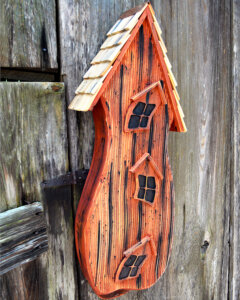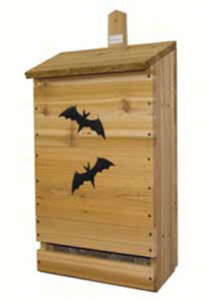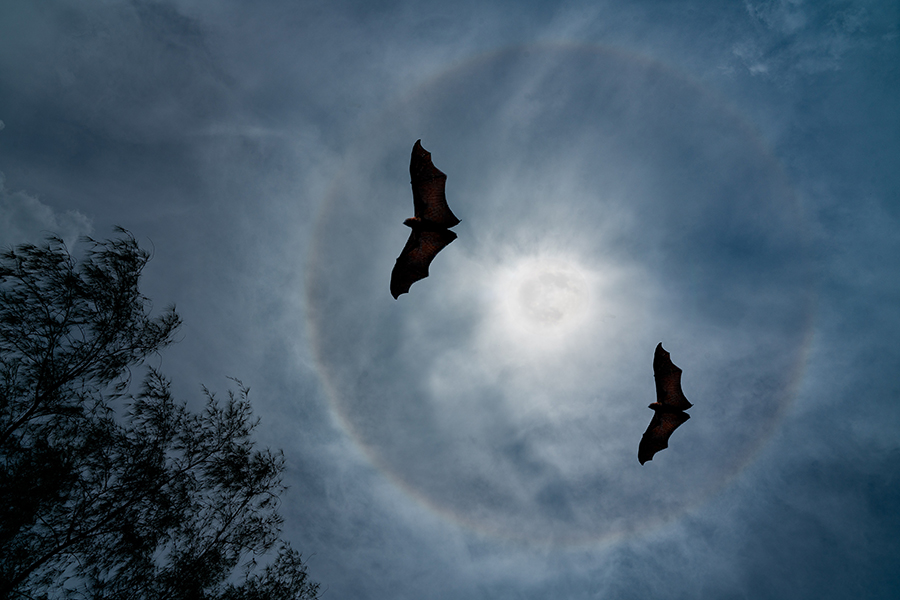In days gone by, advertising on the sides of purple martin house boxes would claim that purple martins will clear your yard of mosquitos. “Buy this house, and you’ll be saved!” This misinformation couldn’t be further from the truth. The purple martin is an 8” bird, beak to tail, and requires a much larger meal. Dragonflies, damselflies, beetles, moths, butterflies, hoverflies, and mayflies are much more satisfying to the nutritional needs of such a sizeable bird. In fact, biologists have found that the mosquito supplies only 3% of a martin’s diet. Since purple martins are roosting just before dusk, and bats come out to hang just after dusk, it’s easy to understand the logic of how things really work.
A bat can eat up to 1,000 mosquitos in a day! In other words, if you want to control mosquitos, you need bats in your yard.

Information from K State tells us that our area has 15 species of beneficial bats. Some hibernate, and some migrate. One of the most common is the Little Brown Bat (Myotis lucifugus), which is not much bigger than a mouse, lives in attics and buildings, and hibernates. Some of our area bats are tree roosting, and they may use a bat house for breeding, while some may use a house to simply roost in large groups. Single chamber bat houses will accommodate only male bats, thus the name “bachelor pad”! Multiple chamber bat houses may become nurseries for females.
Our misunderstood neighbors, bats are one of the most beneficial and least understood animals. Bat fossils, which closely resemble modern bats, date back approximately 50 million years and demonstrate that bats are an extremely successful group of mammals more closely related to primates than rodents.
Bats are the only mammal that has true flight. Their Latin name, chiroptera, means “hand-wing.”

The wings are radically evolved fingers covered with leathery skin. Most bats leave their roosts at twilight, eat for an hour or so using echo location for hunting, consuming half their body weight, and then rest and groom themselves. Bright moonlight or heavy rain may affect their activity. A neighborhood with street lights will attract insects for the bats to seek out, while a country location with little outdoor lighting may not be as desirable. Bats are true hibernators, although some also migrate to avoid extreme cold winters.—By Cathy Clausen
